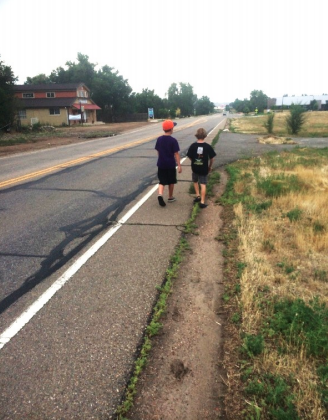Denver’s Suburbs Have Better Policies for Walking Infrastructure Than Denver
By all accounts, Denver is experiencing a cultural and economic renaissance that has made it the Millennial Mecca of the West. You’d think its streets would reflect that. Yet despite its status as Colorado’s urban center, some of Denver’s suburbs have a better grip on how to fund safe streets than the city itself.

Last week’s report from Mile High Connects that laid out the region’s woeful connections to transit contained a lot of worrisome truths. One of the most astounding, though, was that the Mile High City has no plan to fund basic pedestrian infrastructure.
Westminster does, and has for a while. Officials there passed an ordinance in 2007 that added a fee to utility bills. Ninety percent of the suburb’s sidewalks are “acceptable,” according to the report. South of Denver, in Englewood, a 2007 ordinance allowed property owners to opt for a similar fee on their water bill. About 95 percent of homeowners participate.
“That was something that really struck me as I was going around to these different suburban communities, is that a lot of them were stepping up in ways that Denver isn’t,” said WalkDenver policy director Jill Locantore, who worked on the study.
In 2007, Denver spent $10 million on pedestrian improvements around the 38th and Blake RTD station via a one-off bond. But it’s Denver’s sprawling suburbs that created a bona fide, long-term mechanism to make walking safe and appealing.
Here’s more from the report on what the suburbs are doing for pedestrians:
Lakewood also includes sidewalks in its annual maintenance budget: when resurfacing streets, the City will review all of the facilities within the public right-of-way and make any needed repairs. The Cities of Arvada and Aurora set aside funding for “concrete projects” that pays for new sidewalks, repairs to existing sidewalks, curbs, gutters, ADA ramps, and the like. Aurora also allocates $100,000 annually for bike route/lane improvements city-wide.
In 2013, 2014, 2015, the Denver City Council identified bicycle and pedestrian infrastructure as one of their annual priorities. However, this has not resulted in a clear set-aside of funding for this type of infrastructure.
Denver has a complete streets policy, unlike most of its suburbs. Mayor Michael Hancock and the City Council just announced transit connections as a 2016 budget priority, and money seems plentiful. The Mile High Connects report spells out several solutions, too. The pieces are in place for Denver to leapfrog its suburbs on pedestrian infrastructure. All that’s left is for City Hall to act.


